What is the first thing that comes to your mind when you hear the word ‘sensor’? It would most likely be the sense organs that we have- eyes, nose, ears, tongue and skin. These are the natural sensors that we have. Based on the sensory organs, if we define sensor, then we can say that it
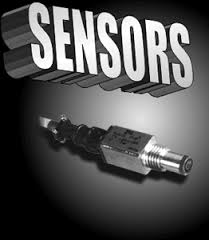 is a device that allows us to sense objects around us, to see them, to smell the odor, to taste eatables, to feel the environment, etc. However, in general terms, a sensor can be defined as a device that detects, measures and converts a physical quantity into a signal that can be read by an observer or an instrument. A sensor allows us to notice things and understand them easily.
is a device that allows us to sense objects around us, to see them, to smell the odor, to taste eatables, to feel the environment, etc. However, in general terms, a sensor can be defined as a device that detects, measures and converts a physical quantity into a signal that can be read by an observer or an instrument. A sensor allows us to notice things and understand them easily.
The sense organs that we have are considered to be Natural sensors and based on these sensors, we have many man-made or artificial sensors that allow us to make our life easy day by day. The artificial sensors are hardware components that can allow a device to know its location, surroundings and many more things. These can be either wired or wireless.
Sensors in Industrial Automation
In the industrial automation section, sensors play a very important role to make the products intelligent and highly automatic. These allow one to detect, analyze, measure and process various changes like change in position, length, height, appearance and displacement that occurs in the production sites. These sensors also play an important role in predicting and preventing many future events, thus, catering to the needs of many sensing applications. The following are the various types of sensors used in industrial automation: Proximity sensors, Vision sensors, Ultrasonic sensors, Position sensors, Photoelectric sensors, Temperature sensors, Inclination sensors, etc.
Let us discuss these sensors in detail to determine their features and to understand their scope of use.
Positioning and Displacement
Certain sensors helps in determining the physical position of a device in the world’s frame of reference. That is, it measures the distance traveled by a device starting from its reference position. Based on the motion of a device, the position sensors used in them are categorized as Linear Position Sensor or Angular Position Sensor.
Linear Position Sensor: This plays an important role in the automation control, where accurate (precision) positioning is required. It measures the linear position of a device. A very good example of this type of sensor is the Linear variable differential transformer (also known as LVDT). It is a type of transformer that is used to sense and measure linear displacement.
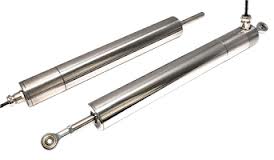
Angular Position Sensor: This sensor often referred to as a rotary sensor calculates the orientation of an object with respect to a specific reference position as has been expressed by the amount of rotation necessary to change from one rotation to the other about a specific axis. It measures the relation established by any position with respect to any other position. These are used, where long term reliability is required.

Whereas based on the sensing principles used, the position sensors can be classified into different categories.
Potentiometric position sensors: These use resistive effect as the sensing principle. It is wear-free as these do not have any contacting parts. In these types of sensors, the position marker is attached to the moving part of the application, whose position needs to be measured. The sensing element is a resistive or a conductive track, where a wiper (for example) is attached to the part of the device, whose displacement has to be measured. The wiper remains in contact with the track. As the device moves, the wiper also moves and the resistance between one end point of the track and the wiper changes. This makes resistance a function of the wiper position. In this, the change in resistance per unit change in wiper position is linear. The ease to use these sensors makes them advantageous.
Applications
The applications for position sensors as a whole are broad. They can be used in anything from motion control of a robot, tank-level sensing or even in semiconductor process equipment.
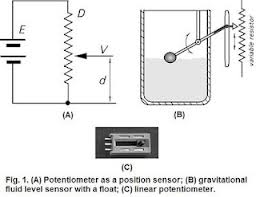
Capacitive displacement sensors: These are based on the principle of ideal plate type capacitors, where the moving object is attached to the dielectric or to the plates of the capacitor to generate the changes in the capacitance. These are the devices that are capable of high resolution measurement of the position or the change of position of any conductive target. These can also measure the density or the thickness of non-conductive material. These types of sensors are found in manufacturing and machining facilities all around the world.
Application
It is used in the precision positioning of objects at the nanometer level and in the measurement of precision thickness of disk drives, assembly line testing and machine tool metrology. It is widely used in machining.
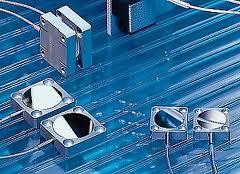
Linear variable differential transformer (LVDT): Popularly known as differential transformer is an electromagnetic device that produces an electrical voltage, which is proportional to the displacement of a movable magnetic core. It is used to measure the linear displacement of the device. These are robust and frictionless. It operates on the principle of electromagnetic coupling and thus, can measure even the infinitesimally small changes in the core. The electromagnetic coupling refers to the transfer of modulated data from one part of the system to the other due to the electric and the magnetic field between them. It is frictionless and can work under high shock and vibration levels.
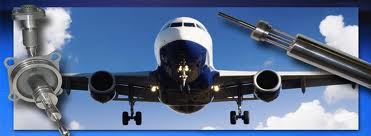
Magnetostrictive linear position sensor: Magnetostriction is a property of the ferromagnetic material (such as iron, nickel and cobalt) to change their size and shape when placed in a magnetic field. The sensors working on this principle of ferromagnetic material to measure the distance between a position magnet and the end of the sensing rod towards the electronic housing are called as Magnetostrictive linear position sensors. In this, the position sensor does not touch the sensing rod so, the parts do not wear out.
Application
These sensors become an essential component in the handicapped lift for van or bus apart from sensing the cylinder position in pneumatic cylinders, sensing position in material handling equipments, for detecting the traffic light burnouts and other such industrial applications.
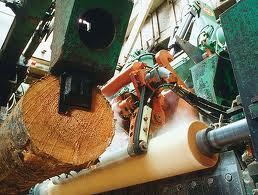
Proximity and Presence
Proximity sensor is a sensor that can detect the presence of nearby objects without any physical contact. These are available in models that use high-frequency oscillation to detect ferrous and non-ferrous metallic objects and in capacitive models to detect non-metal objects.
These convert the information on the movement or the presence of an object into an electrical signal. These sensors do not have any direct contact with the object to be detected so, there are least chances of wear and tear of the device. These can be divided into three categories based on the principle of operation- Inductive sensors, Capacitive sensors, Photoelectric sensors and Magnetic Field sensors.
Inductive Sensors: These are used to detect metallic objects without any contact. These are based on the operating principle of a coil and an oscillator, which creates an electromagnetic field in a closed surrounding. In this scenario, the presence of any metallic object in the operating area causes dampening of the oscillation amplitude. The threshold circuit identifies the rise and fall of the oscillation and changes the output of the sensor. They have long operation life and are extremely robust.
Application
The inductive sensors are used in metal detectors to detect metallic objects without any physical contact. They are also used in car washes and in industrial applications where dirt is prevalent.
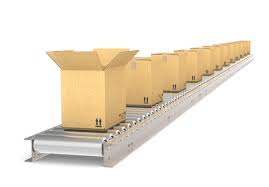
Capacitive Sensors: These proximity sensors are used to detect both metallic and non-metallic objects. The principle on which it works is the variation of capacitance between the sensor and the object that is being detected. An electronic circuit inside the circuit starts oscillating when, an object is present at some distance from the sensitive side of the sensor. The threshold circuit identifies the rise and fall of such oscillation and drives an amplifier to operate an external load. The operating distance is regulated by the screw present at the back of the sensor. These sensors respond the same way to all conductors as these are not sensitive to the material changes and are also not a good choice in dirty or wet conditions.
Application
Capacitive sensors are used in pipeline and vessel leak detection as they can sense both metallic and non-metallic materials. They are also used in applications to control the level of liquids and solids and in pile-up controls in the automation industry.
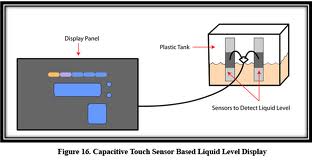
Magnetic Sensors: These proximity sensors work in the presence of a permanent magnet. These work on the principle of usage of reed contacts. A reed contact consists of two low resistance, ferro-magnetic reeds enclosed in a glass bulb filled with inert gas. An electrical contact is created due to the reciprocal attraction of both the reeds in the presence of magnetic field. The best thing about this sensor is that apart from measuring the proximity of a device, these can also be used to measure speed and the position of the devices.
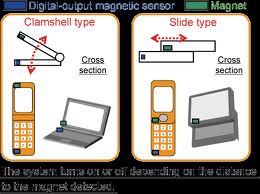
Photoelectric Sensors: A photoelectric sensor is a device that uses a light transmitter (usually infrared) and a photoelectric receiver to detect the presence of an object, its absence and its distance. The light beam is modulated at a particular frequency and the detector that has a frequency sensitive amplifier responds only to the modulated light at that frequency eliminating the false imaging that is otherwise caused by a lamp or sunlight.
Application
The main aim to use these sensors is to handle challenging counting and to detect the non-guided objects in free fall in the automation industry. They are also used for the precise positioning of the objects in the printing machines and to periodically scan the target material on the R, G, B colour channels in order to detect the taught in colour.
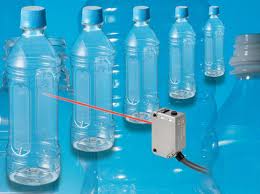
Detecting shapes and dimensions through visual feedback
A vision sensor is a sensor that identifies the shape, dimension, orientation or location of an object through visual feedback. A very good example of such sensors is the camera in our laptop. Vision sensors are more flexible and efficient than the light barriers and are simpler in design due to the configuration for one special field of application. Many difficult applications that required multiple photoelectric or proximity sensors for their work before can now be handled with just one vision sensor, at a low cost. Depending upon the graphic card the application is working on, or on the complexity of the objects sensed, the vision sensors may be little bit slower than the proximity sensors. Vision sensors have a fixed resolution and generally require more processing time and are slower than cameras. The content of a vision sensor image can be accessed via the API (Application Programming Interface). The drawback with vision sensors is that its image content is only available during the actual operation. The two types of vision sensors based on the path of the projection of the rays are-Orthographic projection and Perspective projection.
Orthographic projection type: The field of view of this type of sensor is rectangular. It follows the orthographic projection of rays, where all the parallel rays are perpendicular to the projection plane. This type of projection is well suited for close range infrared sensors or laser range finders. These sensors are based on the concept that the viewer is at infinity or at far of distance.
Perspective projection type: The field of view of this type of sensor is trapezoidal. The perspective projection of rays is considered good for camera type sensors. In this, the rays radiate to a single point from the object at a given distance. These sensor applications rely on the fact that the spectator is at some distance from the object and not at infinity.
Application
Vision sensors are used in cameras to increase the throughput of high resolution and high speed imagest. They are also used for monitoring purpose in different security cameras at homes, offices, etc.
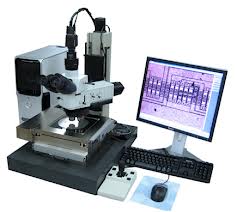
Ultrasonic sensors — positioning or proximity
Ultrasonic sensors use sound waves instead of light. These are considered ideal for the stable detection of liquids, uneven surfaces, objects in dirty environment and clear objects. These sensors use a piezoelectric transducer to detect and send sound waves. These are not affected by the target colour or atmospheric dust, rain, snow, etc. and can work in adverse conditions. These work well in applications that require precise measurements between the moving and the stationary objects. Some companies consider this to be a type of proximity sensor, while others consider it to be a type of position sensor as it is used to detect the presence of nearby objects and uses time to measure the distance. These sensors can be divided into three types based on their modes of operation- Thru-Beam, Diffuse Reflective and Retro-Reflective.
Thru-Beam: It is based on the principle of presence of two separate units- a detector and an emitter. In this, the sound that is emitted by the emitter is detected by the detector and the target is detected, when it passes between the emitter and the detector.
Diffuse Reflective: It is considered to be a single package of emitter and detector in which their field of view cross each other. In this, the emitter emits sound continuously and when the target is within the operating range of the sensor, the emitted sound is reflected by the target and detected by the detector.
Retro-Reflective: This type of sensor contains an emitter, a detector and a Retro-reflector. The emitter and the detector are in the same package while the retro-reflector is placed a little far from the sensor. The sensor works on the principle that the sound from the emitter is reflected by the retro-reflector and detected by the detector, instead of getting reflected directly from the target to the detector.
Application
These sensors are used for detecting objects where the normal photocells cannot be used like for level measurement of solids and liquids, diameter or loop detection for materials like paper, sheet iron, and for the detection of transparent objects like plastic, glass bottles, plastic filters, etc. They can be preferred over Photoelectric sensors for object detection because they are not affected by colored, transparent or shiny objects.
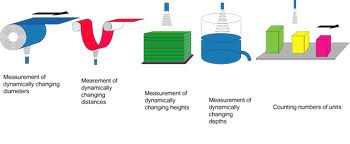
Temperature Sensing
A device that gathers information related to temperature from a source and then converts it into a form that can be easily understood by an observer or any other device. These are the most commonly used sensors in the present world, a very good example being a thermometer. These sensors are used to measure the temperature of a medium so that they can be controlled. There are two types of temperature sensors- Contact sensors and Non-contact sensors.
Contact Sensors: As the name suggests, this sensor measures the temperature of the object to which the sensor is in contact with. However, it has a limitation, that is both the sensor and the object should be in thermal equilibrium, that is there should not be any flow of heat between them.
Non-Contact Sensors: On contrary to the contact sensors, these measure the heat radiations from the environments within a given area. These do not need to be in actual contact with the object. Many non-contact sensors now a days are being used to control temperature as well as humidity of an area and to make the area comfortable for us.
Application
The temperature sensor is used in the refrigerators and in boilers in the HVAC systems apart from other applications in the Automation industry. They are used as a source of temperature control in many applications from windpower to compressed air.
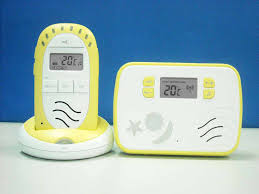
Detecting Inclination and Angles
Inclination sensors are used to measure the tilt or angle of inclination of a machine or an object with respect to a horizontal plane. In this, the reference plane can be either a particular two dimensional axes or 3 dimensional plane. In order to measure the inclination with the Earth’s ground plane an accelerometer is used.
Markets, today have numerous devices to monitor the inclination angles however, these do not provide the information as per industry needs. These can measure the inclination angle in an angular range of up to 360°. These are contact free and can be easily integrated into the systems. These work on high precision levels of as low as 0.1° and can work in an extended temperature ranges of -40 to 85 °C. These can be used in tough conditions, inside compact metal housings. The main use of inclination sensors is to keep the display of a device in correct position as per the user hold it. These can be broadly divided into two categories- Switch based and Proportional Inclination Sensors.
Switch Based Inclination Sensors: These sensors are the most basic ones and have just two states of output. These can again be categorized as- Mercury Tilt Switch and Ball in a Cage Structure Switch. The switches that have mercury bead within them that completes the contact when inclined are called Mercury Tilt Switches. Depending upon the number of contacts used in them, mercury tilt switches can be either SPST and SPDT. Whereas in case of Ball in a Cage structure switches, a metallic ball plays the role of the mercury. The ball prevents vibrations and shock.
Proportional Inclination Sensor: The output of these sensors is proportional to the degree of inclination. Depending upon the inclination mechanism, these sensors can be further divided into three categories-Electrolytic inclination sensors, MEM based sensors and Optical inclination sensors.
Electrolytic Inclination Sensor: Similar to a lead acid battery, this sensor contains both positive and negative electrodes along with an electrolyte. When the sensor is at rest, no potential is generated as the electrodes are equally merged in the electrolyte, whereas when the sensor is inclined, a potential difference is generated depending on the level of submergence of the electrodes in the electrolyte thus, enabling a better electrical connectivity.
Application
They are used in fall alarms, that indicates that a worker has fallen over while working. They are also used in thermostats and in pressure switches.
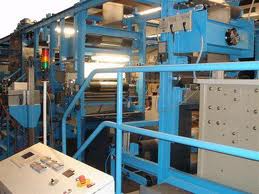
MEM Based Sensors: MEMS refer to Micro Electro-Mechanical Systems that integrate mechanical elements, actuators, sensors and electronics on to a common silicon substrate through the micro fabrication technology. The movement of the object on this sensor depicts its inclination. These are not as precise as the electrolytic inclination sensors however, do have the memory option to record the previous position of the object and these provide medium resolution too.
Application
They level shift the outputs of the sensors for proper levels of conversion and are also used for rollover or stability control along with monitoring of patients.
Optical Inclination Sensors: These use a light source, detector and also lenses at times. These are smaller in size and detect the intensity of light that falls on them along with the angle with which the beam strikes and gives electrical signals accordingly.
Application
They are used in robot hands for detecting the presence of liquid crystal glass.
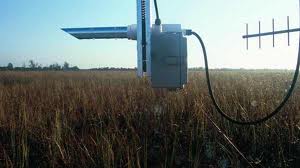
Humidity Sensors
As the name suggests, the humidity sensors are used to detect the humidity level (moisture content) in the air. These play a very important role from medical point of view. In areas, where humidity is extremely low, static electricity is generated, which can even burn things however, in areas, where there is high humidity things would get damaged due to bacterial and fungal growth. So, a humidity sensor senses the humidity level and transfers that information to any humidity controller for further action. Again based on their working principle, these sensors can be classified as-Capacitive and Resistive.
Capacitive Humidity Sensors: It is considered to be a mature technology in the field of sensing. The increase in the dielectric constant of a humidity sensor is directly proportional to the relative humidity of the surrounding environment. Thus, the material used in this sensor plays an important role.
Resistive humidity sensors: These use a thin piece of lithium chloride or other semiconductor devices that measure resistance. The material of this sensor becomes wet due to the presence of water vapor in the air and helps us determine the humidity information. These sensors can work in high temperatures up to 212° Fahrenheit.
Application
They are used in the HVAC systems so as to detect the humidity level in the industry and in transmission lines, antennas, and waveguides used in telecommunications.
Sensing various parameters
Now we are able to understand the working and the advantages of different sensors in order to make their correct use in the required application. Most of the sensors discussed above, focus on measuring either the presence or the distance of an object, owing to their different working principles. However, there are other sensors as well, like the temperature and the humidity sensors, which are different and are used to detect the different parameters in the environment. Applications related to industrial automation can easily use these sensors depending upon their requirement and their working principles for the correct functioning of the device.






